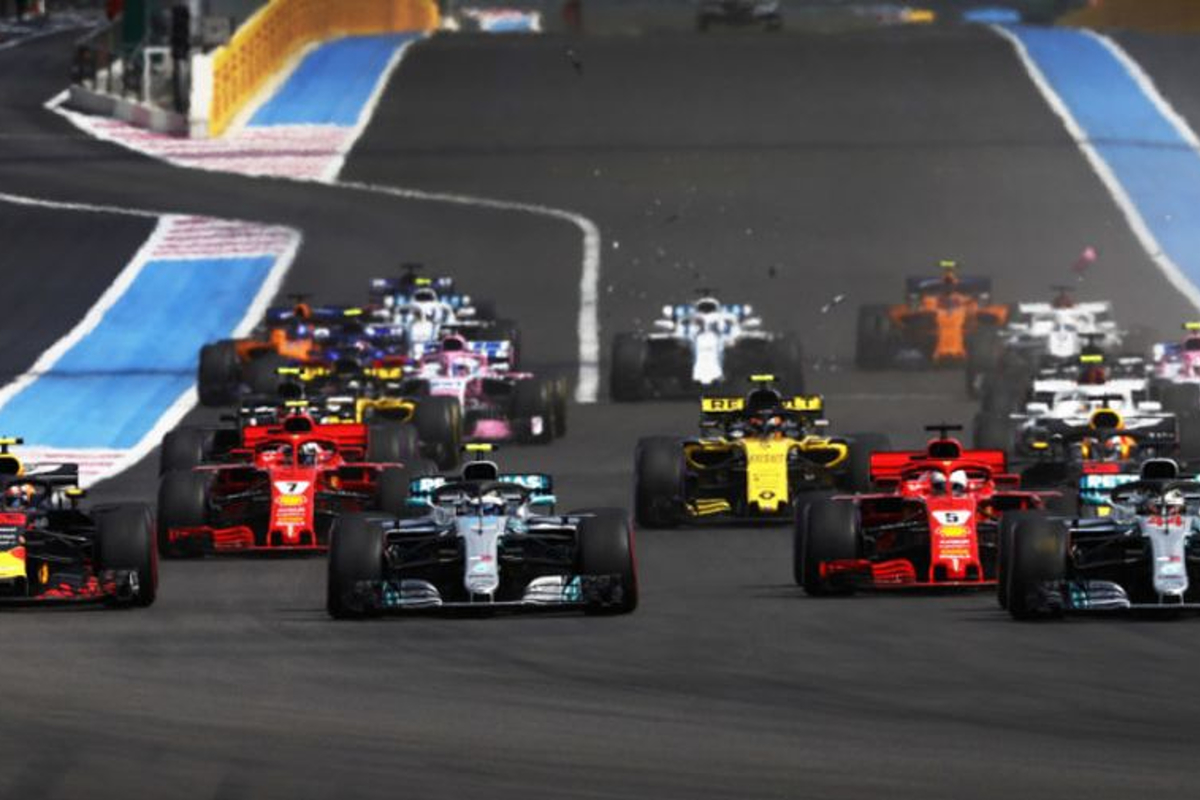Formula 1 spectacularly returned to action after the summer break with an unpredictable and record-breaking Dutch Grand Prix.
Zandvoort seemingly didn't get the memo that it was hosting an August event, and the two downpours that bookended the race meant this was a round with start-to-finish entertainment.
With everything from strategy calls to dancing, here are five things we learned from 2023's Dutch GP.
A Record-Breaking Race
We're finally learning that very few F1 records will stand forever, no matter how incredible they seem when a team or driver first sets them.
Sebastian Vettel's decade-old run of nine consecutive wins seemed like an achievement that no one would reach again, especially when Lewis Hamilton and Nico Rosberg failed to get close during Mercedes' best years.
READ MORE: Verstappen equals record with victory in DRAMATIC rain-hit Dutch GP
Yet Max Verstappen matched that streak in front of his home crowd, even with everything Mother Nature threw at him, and it'll be more surprising if he doesn't beat the record on Sunday's Italian GP than if he does.
It wasn't Verstappen who was there as the record breaker in Zandvoort, though, with Fernando Alonso taking that duty with his triumphant return to the podium.
The Spaniard's P2 means he beat Michael Schumacher for career longevity in grabbing F1 silverware, with Alonso's first rostrum trip coming in the 2003 Malaysian GP, some 7462 days earlier.
Schumacher's final podium in the 2012 European GP in Valencia was 7399 days after his first, way back in the 1992 Mexican GP, meaning that the mighty German lost this record.
Right Tyres at the Right Time
No matter how many races in changeable conditions go by, F1 drivers and engineers never seem to remember the number one wet-weather rule: be on the right tyres at the right time.
I can't be the only one watching on Sunday feeling completely perplexed as Verstappen, Lando Norris, George Russell, and more raced by the pit entry after the cagey first lap of tiptoeing around the track.
Sergio Perez, the highest-placed driver to pit, soon forgot the qualifying deficit to his illustrious teammate one day earlier by jumping from P7 to P1 within a handful of miles just by pitting for weather-appropriate tyres.
If the Mexican and his champion teammate were evenly matched, and Logan Sargeant's hydraulics failure had not caused a safety car, that single-lap delay could easily have become the reason Verstappen didn't make it to nine in a row.
Pierre Gasly's podium from a P12 start is a shining example of what's possible when the rain becomes a strategic variable in a race with Alpine boxing the Frenchman after Lap 1.
Rain or Shine, Party all the Time
There's plenty for Dutch fans to enjoy in Formula 1 right now, seeing their hero becoming one of the sport's all-time greats, but the weather didn't match the Dutch GP's party weekend.
That didn't make any difference to the 305,000 spectators packing the coastal circuit, though, and any channel-hopping viewer might've thought they'd tuned into a music festival with some of Sunday's crowd shots.
Dancing in the dunes was the order of all three days, no matter whether the dark clouds overhead were bucketing down rain or not.
Conga lines, lion mascots, flying cups of beer; the Dutch GP saw it all as Verstappen put on the show the cheering fans had dreamt of watching.
Red Bull's Depth of Talent
Although there's speculation Helmut Marko is looking to trim the fat from his Red Bull Junior Team, the sheer volume of drivers with Red Bull affiliation was easy to see in Zandvoort.
Daniel Ricciardo's wrist-injuring crash on Friday meant the replacement driver for Nyck de Vries needed replacing himself, with Kiwi rookie Liam Lawson stepping up to make his Formula 1 debut.
Lawson has impressed many in Japan's Super Formula this year, especially with a victory in the first round against an experienced field, and he kept his AlphaTauri pointing forward and out of the barriers on Sunday.
Few, if any, teams have such a deep driver pool to find a replacement for their replacement at such short notice, but there are no such worries for Red Bull.
With no word on how long Ricciardo's recovery time will be, Lawson might have the perfect audition for a 2024 drive.
Wasted Wet Tyres
If you ever feel like you're struggling for a purpose, find solace that you're not a blue-ringed Pirelli wet tyre, perhaps the most useless item in modern racing.
Conditions requiring the full wets came in the final laps, and as soon as any drivers thought the intermediates weren't up to the job, the red flag emerged.
Safety is paramount, and Zhou Guanyu's high-speed trip to the barriers shows how dangerous the track was getting, but we're now effectively equating the wet tyres' requirements to red-flag conditions.
The intermediate tyre accidentally continues to be an all-weather creation that handles the most extreme rain that Formula 1 will run in, while the wets are for conditions too dangerous for racing, meaning they're pointless.
Whatever changes Pirelli had hoped their wet-weather offering would help with in 2023 don't work, and the Italian tyre manufacturer must go back to the drawing board to bring appropriate rubber for inclement conditions.
READ MORE: F1 Driver Salaries: How much do Hamilton, Verstappen and co earn?
Related






 GP AUSTRALIA
14 - 16 Mar
GP AUSTRALIA
14 - 16 Mar

 GP CHINA
21 - 23 Mar
GP CHINA
21 - 23 Mar

 GP JAPAN
4 - 6 Apr
GP JAPAN
4 - 6 Apr

 GP BAHRAIN
11 - 13 Apr
GP BAHRAIN
11 - 13 Apr

 GP SAUDI ARABIA
18 - 20 Apr
GP SAUDI ARABIA
18 - 20 Apr

 GP USA
2 - 4 May
GP USA
2 - 4 May

 GP ITALY
16 - 18 May
GP ITALY
16 - 18 May

 GP MONACO
23 - 23 May
GP MONACO
23 - 23 May

 GP SPAIN
30 May - 1 Jun
GP SPAIN
30 May - 1 Jun

 GP CANADA
13 - 15 Jun
GP CANADA
13 - 15 Jun

 GP AUSTRIA
27 - 27 Jun
GP AUSTRIA
27 - 27 Jun


























 Grand Prix of Belgium 2025
Grand Prix of Belgium 2025  Grand Prix of Hungary 2025
Grand Prix of Hungary 2025  Grand Prix of Azerbaijan 2025
Grand Prix of Azerbaijan 2025  Grand Prix of Singapore 2025
Grand Prix of Singapore 2025  Gran Premio de la Ciudad de Mexico 2025
Gran Premio de la Ciudad de Mexico 2025  Grande Prêmio de São Paulo 2025
Grande Prêmio de São Paulo 2025  Qatar Grand Prix 2025
Qatar Grand Prix 2025  Grand Prix of Abu Dhabi 2025
Grand Prix of Abu Dhabi 2025 